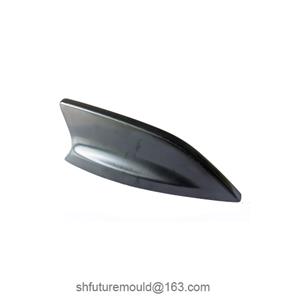Precision of Wire EDM in Injection Mold Manufacturing
Wire EDM technology offers the advantage of high precision in injection mold manufacturing, making it particularly suitable for machining mold components with complex geometries and high-quality surface requirements.
The precision of wire EDM refers to the degree of deviation between the machined part and the design dimensions, typically measured in terms of dimensional and geometric tolerances. In injection mold manufacturing, the required precision usually ranges from ±0.002mm to ±0.01mm, depending on the mold's purpose and complexity.
Factors Affecting Wire EDM Precision
1. Performance of Machining Equipment
The accuracy of machine guides, the smoothness of wire movement, and the responsiveness of the control system directly impact machining precision. High-end machines (e.g., slow-wire EDM) deliver superior accuracy.
2. Quality of the Electrode Wire
The diameter tolerance, tension, and guiding stability of the electrode wire influence the consistency of the cutting path, affecting precision.
3. Material Properties of the Workpiece
The conductivity, hardness, and thickness of the material affect the discharge process. Poor conductivity or thick materials may reduce machining precision.
4. Machining Parameter Settings
Parameters such as pulse width, current, and machining speed directly influence precision and surface quality. Proper optimization minimizes errors.
2. Thermal Deformation and Stress
High temperatures generated during discharge can cause localized thermal deformation, affecting precision.
6. Cutting Path Planning
Poorly designed cutting paths may lead to cumulative errors or overcuts, especially at curves and sharp angles.
7. Stability During Multiple Cuts
Precision machining often involves multiple cuts (roughing, semi-finishing, and finishing). Errors from earlier stages can accumulate and affect final accuracy.
Methods to Control Wire EDM Precision
1. Utilizing High-Precision Equipment
Employ slow-wire EDM machines with precision levels of ±0.002mm to enhance machining accuracy.
2. Optimizing Electrode Wire Tension
Maintain stable wire tension to prevent deviations caused by wire slack or vibration.
3. Setting Appropriate Machining Parameters
Adjust current, pulse intervals, and feed rates based on the material and geometry. Use higher settings for roughing and lower settings for finishing.
4. Reducing Thermal Deformation
Use high-quality cooling fluids to enhance heat dissipation in the discharge area and minimize thermal deformation.
5. Optimizing Cutting Paths
Utilize advanced CNC programming to refine cutting paths, reducing overcuts or undercuts at corners and transitions.
6. Adopting Multiple-Cutting Strategies
Remove bulk material during rough cuts and perform multiple finishing cuts to refine dimensions and eliminate residual errors.
7. Minimizing Machine Vibration
Reduce external vibration interference during machining to ensure equipment stability and consistent accuracy.




